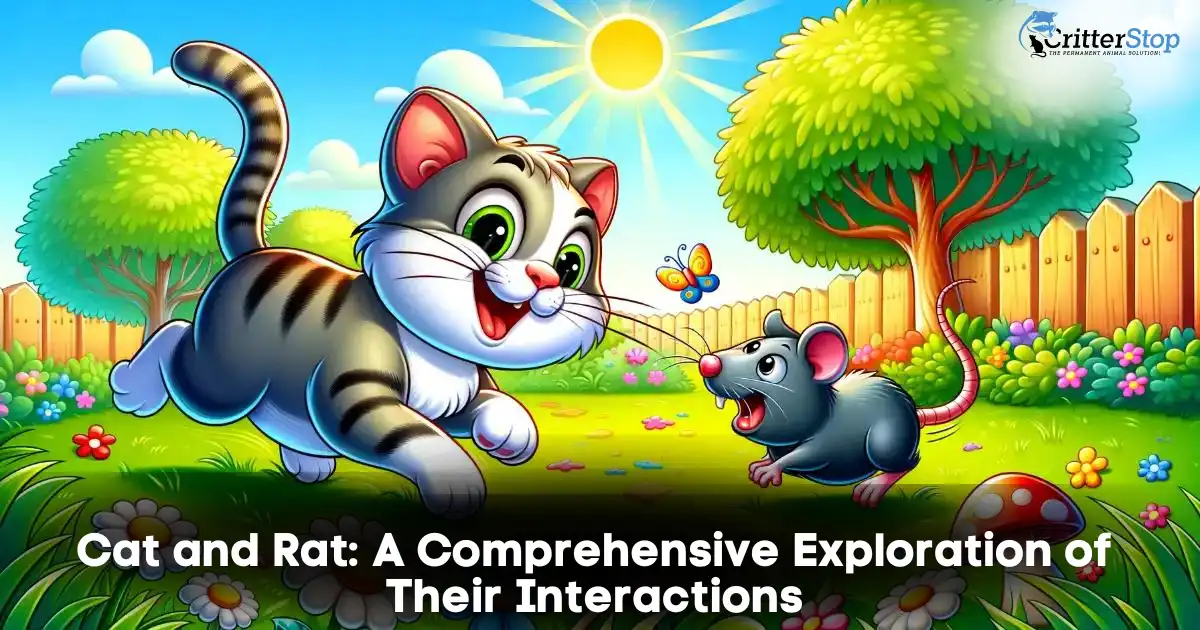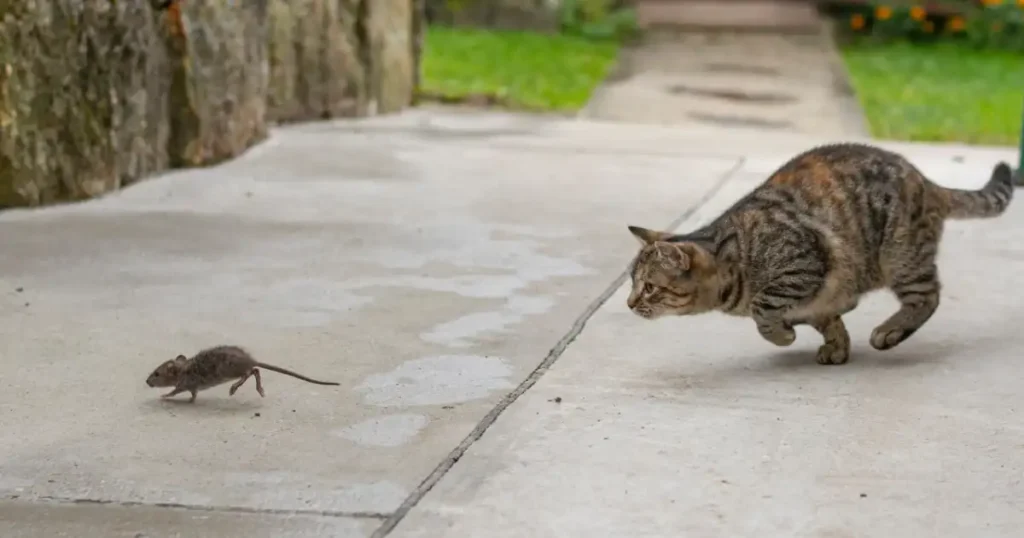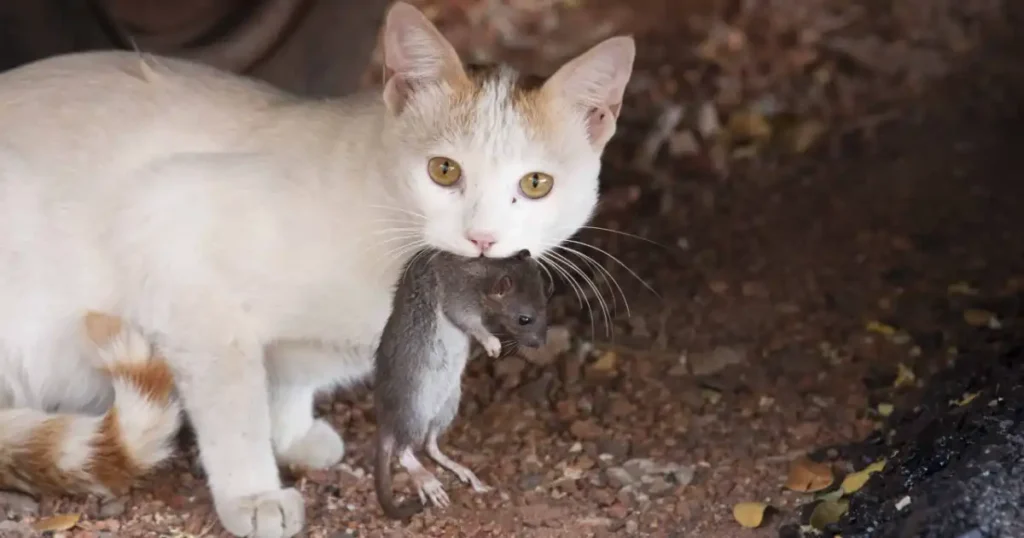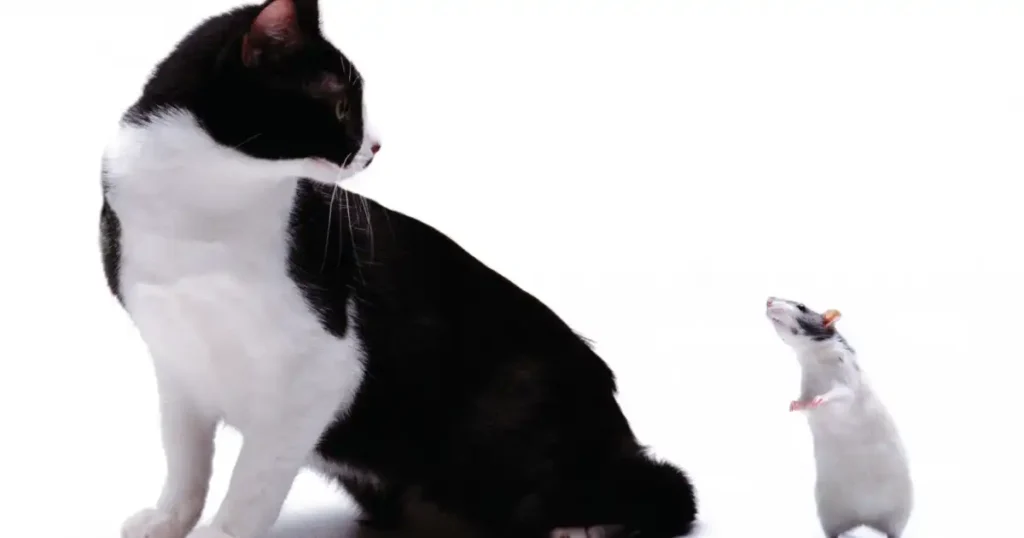
In the world of animals, the relationship between cats and rats has always been a subject of intrigue. This article delves deep into the dynamics between these two species, exploring their behaviors and interactions, including the cat and rat fights, and the broader implications of their coexistence. Our goal is to provide a detailed understanding that surpasses any existing content on this topic.
The domestication of cats dates back thousands of years, with evidence suggesting that cats were first domesticated in ancient Egypt. Their primary role was to control the rat population, which posed a threat to grain stores. Over time, cats became revered in various cultures for their hunting prowess and were often associated with deities. The phrase "cat kills rat" encapsulates this historical function.
Rats, on the other hand, have a long history of being both a pest and a symbol in various cultures. Their ability to adapt to and thrive in diverse environments made them a common sight in human settlements. The relationship between cats and rats thus evolved out of necessity, with cats being natural predators of rats.

Instinctual Hunting Behavior in Cats
Cats are born hunters. Sight, sound, and movement are all factors that influence their natural hunting behavior. Even domesticated cats exhibit strong hunting instincts, often stalking and pouncing on toys as if they were prey. This behavior is not just for sustenance but also serves as a form of exercise and mental stimulation. The phrase "cat kills rat" aptly describes this predatory instinct.
Adaptability and Survival Tactics of Rats
Rats are highly adaptable creatures. Their survival tactics include nocturnal foraging, exceptional climbing abilities, and a keen sense of smell. These traits make them formidable survivors, even in environments where predators like cats are present. Rats can detect and avoid potential threats, which is why they often outsmart traps and evade capture.
Predatory Instincts vs. Survival Strategies
The interaction between cats and rats is a classic example of predatorprey dynamics. Cats rely on their stealth, speed, and agility to catch rats, while rats use their intelligence and adaptability to avoid predation. This ongoing battle, often culminating in a dramatic cat and rat fight, has led to an evolutionary arms race, with each species developing strategies to outcompete the other.
Case Studies and Observations
Numerous studies have documented the interactions between cats and rats. For instance, research has shown that the mere presence of cats can deter rats from entering certain areas. However, in environments where rats are abundant and resources are plentiful, rats can coexist with cats by altering their activity patterns to avoid direct confrontation.
Pest Control and Public Health
Cats have historically been used for pest control in agricultural and urban settings. Their ability to reduce rat populations has significant public health implications, as rats are known carriers of diseases such as leptospirosis, hantavirus, and the plague. By controlling rat populations, cats indirectly contribute to reducing the spread of these diseases.
Ethical Considerations in Urban Settings
In urban settings, the use of cats for pest control raises ethical considerations. While cats can effectively reduce rat populations, they can also impact local wildlife, such as birds and small mammals. Additionally, the welfare of stray and feral cats must be considered, as these animals often face harsh living conditions.

Innovative Pest Control Methods
Modern pest control methods have evolved beyond relying solely on cats. Integrated pest management (IPM) approaches combine biological, mechanical, and chemical methods to control rat populations more effectively and humanely. These methods include the use of traps, bait stations, and habitat modification to reduce the availability of food and shelter for rats.
The Role of Technology
Advancements in technology have also played a role in pest control. Devices such as ultrasonic repellents and motionactivated deterrents can help keep rats at bay without harming them. These technologies, combined with traditional methods, offer a more comprehensive approach to managing rat populations.
Benefits of Using Cats for Pest Control
Cats have been employed as natural pest controllers for centuries due to their efficiency in reducing rodent populations. Some key benefits include:
Reduction in Rat Populations: Cats can significantly decrease the number of rats in a given area. Their presence alone can be a deterrent for rodents, leading to lower infestation rates.
Environmentally Friendly: Unlike chemical pest control methods, using cats is an ecofriendly approach. It avoids the use of potentially harmful substances that can affect other wildlife and the environment.
Cost Effective: Employing cats can be more costeffective than continuous spending on traps and poisons. Once established, a cat colony can provide longterm pest control with minimal ongoing costs.

Despite their benefits, there are limitations to using cats for pest control:
Impact on Wildlife: Cats can have a detrimental effect on local wildlife, particularly birds and small mammals. Their hunting instincts do not discriminate between pests and beneficial species.
Health Risks: Feral and stray cats can carry diseases that are transmissible to humans and pets, such as toxoplasmosis and cat scratch fever.
Incomplete Control: Cats may not completely eliminate a rat population, especially in areas with abundant food and shelter for rodents. Rats can also adapt their behaviors to avoid predation.
Social Structure and Reproduction
Rats have a highly organized social structure and are prolific breeders. Understanding their behavior is crucial for effective control:
Hierarchy: Rats live in hierarchical colonies with dominant and subordinate individuals. This social structure influences their foraging and nesting behaviors.
Breeding: Female rats can produce multiple litters per year, with each litter containing up to 12 pups. This rapid reproduction can lead to explosive population growth if not managed.
Diet: Rats are omnivores with a preference for highcalorie foods. They are opportunistic feeders and can adapt to available food sources.
Nesting: Rats prefer to nest in sheltered, undisturbed areas close to food and water sources. Common nesting sites include basements, attics, and wall voids.
Combining Methods for Optimal Results
An integrated pest management (IPM) approach combines multiple strategies to control rat populations more effectively. Key components include:
Biological Control: Utilizing natural predators like cats can be part of an IPM strategy but should be complemented with other methods.
Mechanical Control: Traps and barriers can physically reduce rat populations. Snap traps, live traps, and electronic traps are commonly used.
Chemical Control: When necessary, rodenticides can be employed, but should be used judiciously to minimize risks to nontarget species and the environment.
Environmental Management: Reducing food and shelter availability is crucial. This includes proper sanitation, waste management, and structural repairs to eliminate entry points.

Regular monitoring and maintenance are essential for a successful IPM program.
Inspections: Conduct routine inspections to identify signs of rat activity and assess the effectiveness of control measures.
Recordkeeping: Maintain detailed records of pest activity, control measures implemented, and their outcomes. This data helps in adjusting strategies as needed.
Community Involvement: Engage the community in pest control efforts. Public education on sanitation and reporting can enhance the overall effectiveness of the IPM program.
Urban Success Stories
Several cities have implemented successful cat programs to manage rat populations. For example:
Rome, Italy: Known for its large population of feral cats, Rome has seen a reduction in rodent problems in certain areas where cats are prevalent. The city has implemented spay/neuter programs to manage the cat population humanely.
New York City, USA: The "Working Cats" program places feral cats in areas with high rodent activity. While receiving volunteer care, these cats act as natural pest control.
From these case studies, several lessons can be drawn:
Community Support: Successful programs often rely on strong community support and involvement.
Humane Practices: Implementing humane practices, such as spay/neuter and providing food and shelter for the cats, can enhance the sustainability of the program.
Complementary Methods: Combining cat presence with other pest control methods yields the best results.
Advancements in Research
Ongoing research continues to improve our understanding of catrat interactions. Future directions include:
Behavioral Studies: Detailed studies on the behaviors of both cats and rats can inform more effective control strategies.
Genetic Insights: Research into the genetics of rats and their resistance to certain control methods can lead to new approaches in pest management.
Technology Integration: Innovations in technology, such as smart traps and monitoring systems, can enhance the effectiveness of integrated pest management programs.
Balancing pest control with wildlife conservation remains a critical consideration.
Ethical Pest Control: Developing and promoting ethical pest control methods that minimize harm to nontarget species and ecosystems.
Wildlife Protection: Ensuring that pest control efforts do not negatively impact local wildlife populations and biodiversity.
When it comes to professional and humane rat extermination, Critter Stop stands out as a leader in the industry. Here are several reasons why Critter Stop is the best choice for your rat control needs:
Expertise and Experience: Critter Stop has years of experience in wildlife removal and pest control. Their team of experts is well versed in the latest IPM strategies and technologies.
Humane Methods: Critter Stop is committed to using humane methods to control rat populations. They prioritize the wellbeing of all animals involved and employ ethical practices in all their services.
Customer Satisfaction: With a stellar reputation and numerous positive reviews online, Critter Stop is known for providing high-quality work and exceptional customer service. Their clients consistently praise their professionalism, effectiveness, and friendly approach.
Comprehensive Solutions: From inspection and identification to exclusion and prevention, Critter Stop offers a full range of services to ensure that your rat problem is resolved completely and efficiently.
If you're dealing with a rat infestation, don't hesitate to contact Critter Stop for the best rat exterminator services. Their team will work with you to develop a customized plan that meets your specific needs and ensures the safety and comfort of your home.
At Critter Stop, we have provided our rat extermination services for years in the North Texas area, helping customers to protect their family, pets, and property from rats damages.
Contact us at (214) 234-2616 to get a free estimate of our services.
Visit our Critter Library and learn more about our furry friends